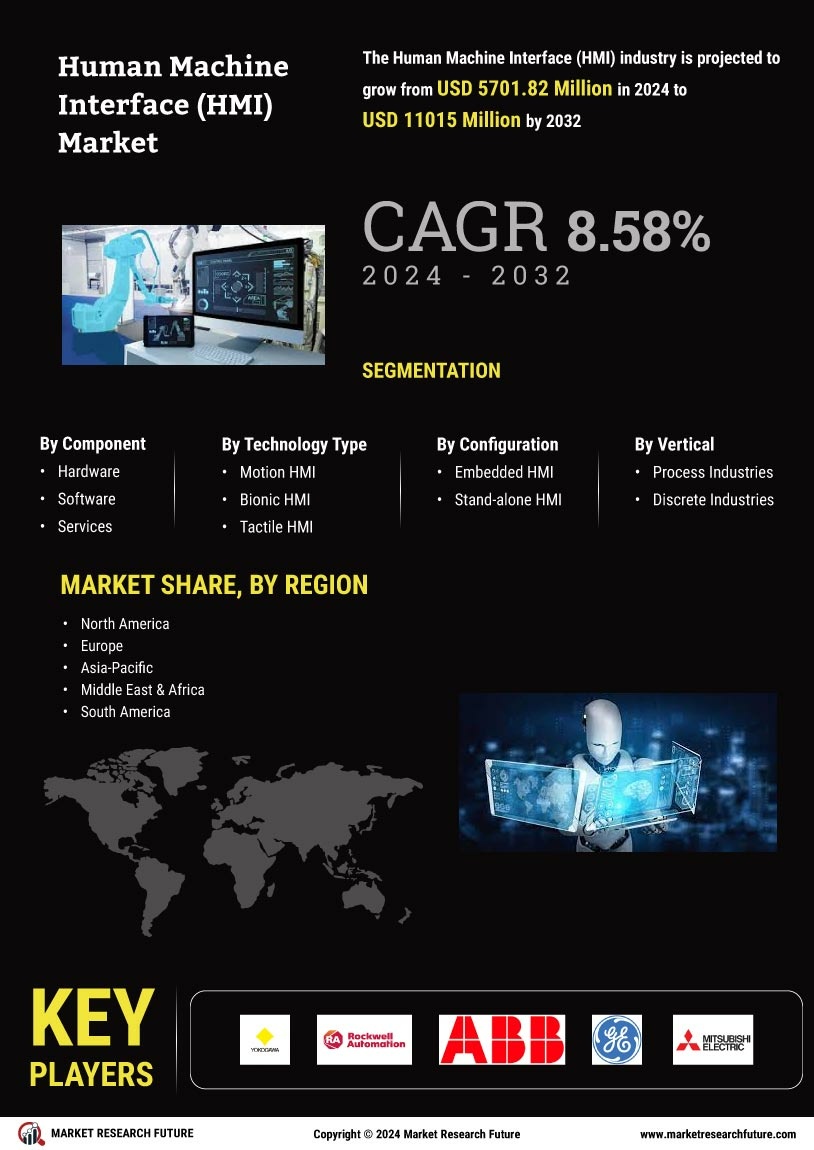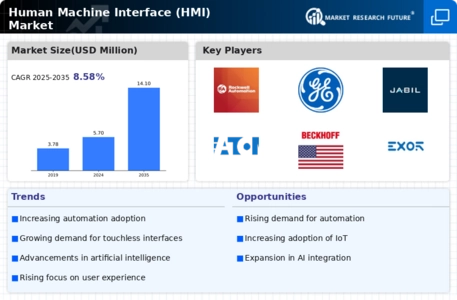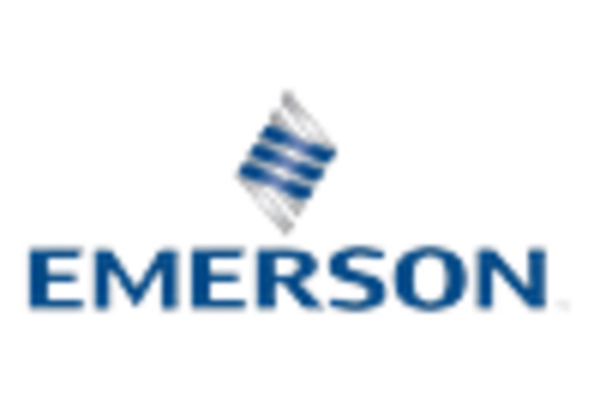Market Growth Projections
The Global Human Machine Interface Market (HMI) Market Industry is poised for substantial growth, with projections indicating a market value of 5.7 USD Billion in 2024 and an anticipated increase to 14.1 USD Billion by 2035. This growth trajectory suggests a compound annual growth rate of 8.58% from 2025 to 2035. Such figures reflect the increasing reliance on HMI systems across various sectors, driven by technological advancements, rising automation, and a focus on user-friendly interfaces. The market's expansion is indicative of the broader trends towards digitization and smart manufacturing, highlighting the critical role of HMI solutions in modern industrial applications.
Technological Advancements
The Global Human Machine Interface Market (HMI) Market Industry is experiencing rapid technological advancements that enhance user experience and operational efficiency. Innovations in touch screen technology, voice recognition, and augmented reality are reshaping how machines interact with users. For instance, the integration of artificial intelligence in HMI systems allows for predictive maintenance and improved decision-making processes. As these technologies evolve, they are expected to drive the market's growth, with the industry projected to reach 5.7 USD Billion in 2024. This trend indicates a robust demand for more sophisticated and user-friendly interfaces across various sectors.
Rising Automation in Industries
The increasing trend of automation across multiple sectors is a significant driver for the Global Human Machine Interface Market (HMI) Market Industry. Industries such as manufacturing, healthcare, and transportation are adopting automated systems to enhance productivity and reduce human error. For example, the implementation of HMI systems in manufacturing plants allows for real-time monitoring and control of processes, leading to increased operational efficiency. This shift towards automation is anticipated to contribute to the market's growth, with projections indicating a rise to 14.1 USD Billion by 2035. The demand for intuitive HMI solutions is likely to escalate as industries seek to optimize their operations.
Expansion of Smart Manufacturing
The expansion of smart manufacturing initiatives is a pivotal driver for the Global Human Machine Interface Market (HMI) Market Industry. As industries embrace Industry 4.0 principles, the integration of HMI systems becomes essential for facilitating communication between machines and operators. Smart factories utilize HMI solutions to gather and analyze data, enabling real-time decision-making and process optimization. This trend is expected to significantly contribute to the market's growth, with projections indicating a rise to 14.1 USD Billion by 2035. The increasing adoption of IoT-enabled devices in manufacturing processes further underscores the importance of advanced HMI systems in achieving operational excellence.
Increased Focus on Safety and Compliance
Safety and compliance regulations are becoming increasingly stringent across various industries, driving the demand for advanced Human Machine Interface Market (HMI) systems. The Global Human Machine Interface Market (HMI) Market Industry is responding to this need by developing interfaces that enhance safety protocols and ensure regulatory compliance. For example, in the automotive sector, HMI systems are designed to provide real-time feedback to operators, thereby minimizing risks associated with machine operation. This focus on safety not only protects workers but also helps organizations avoid costly penalties associated with non-compliance. As a result, the market is likely to see sustained growth as companies prioritize safety in their operations.
Growing Demand for User-Friendly Interfaces
The demand for user-friendly interfaces is a critical factor propelling the Global Human Machine Interface Market (HMI) Market Industry. As industries strive to improve user engagement and reduce training time, the emphasis on intuitive design becomes paramount. Companies are increasingly investing in HMI solutions that prioritize ease of use, which can lead to enhanced productivity and reduced operational costs. For instance, the healthcare sector is adopting HMI systems that simplify complex data visualization for medical professionals. This trend is expected to sustain the market's growth trajectory, with a compound annual growth rate of 8.58% projected from 2025 to 2035.
















Leave a Comment